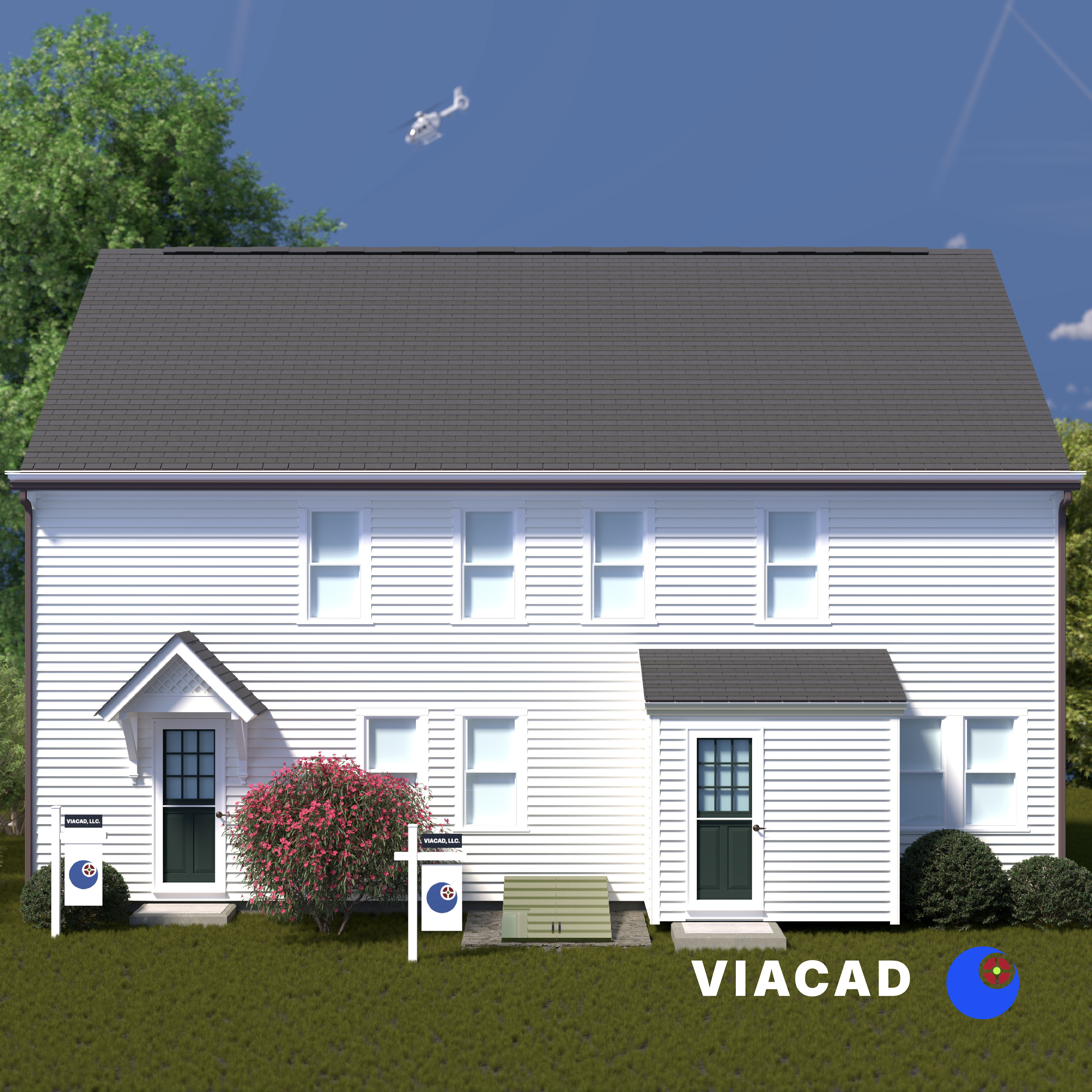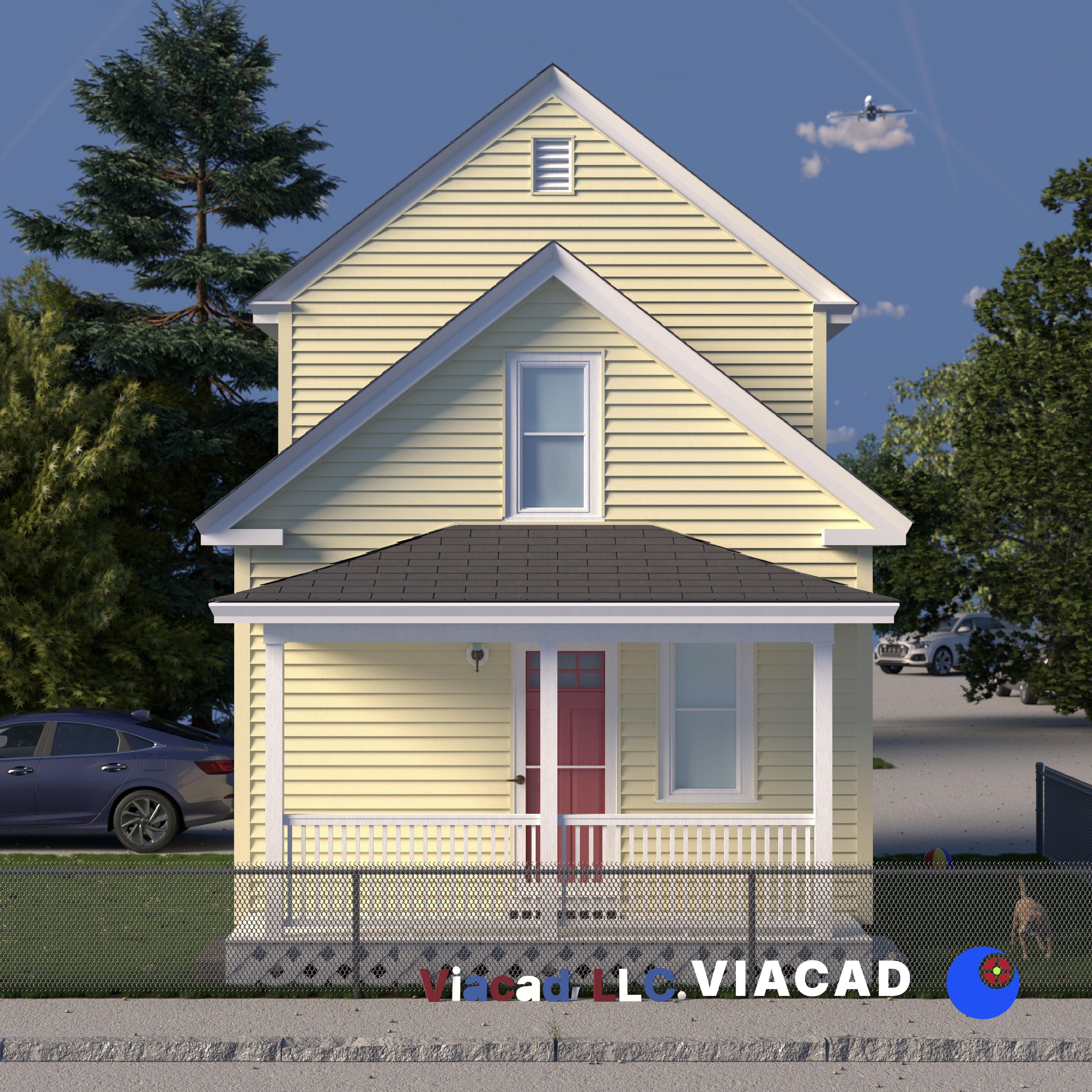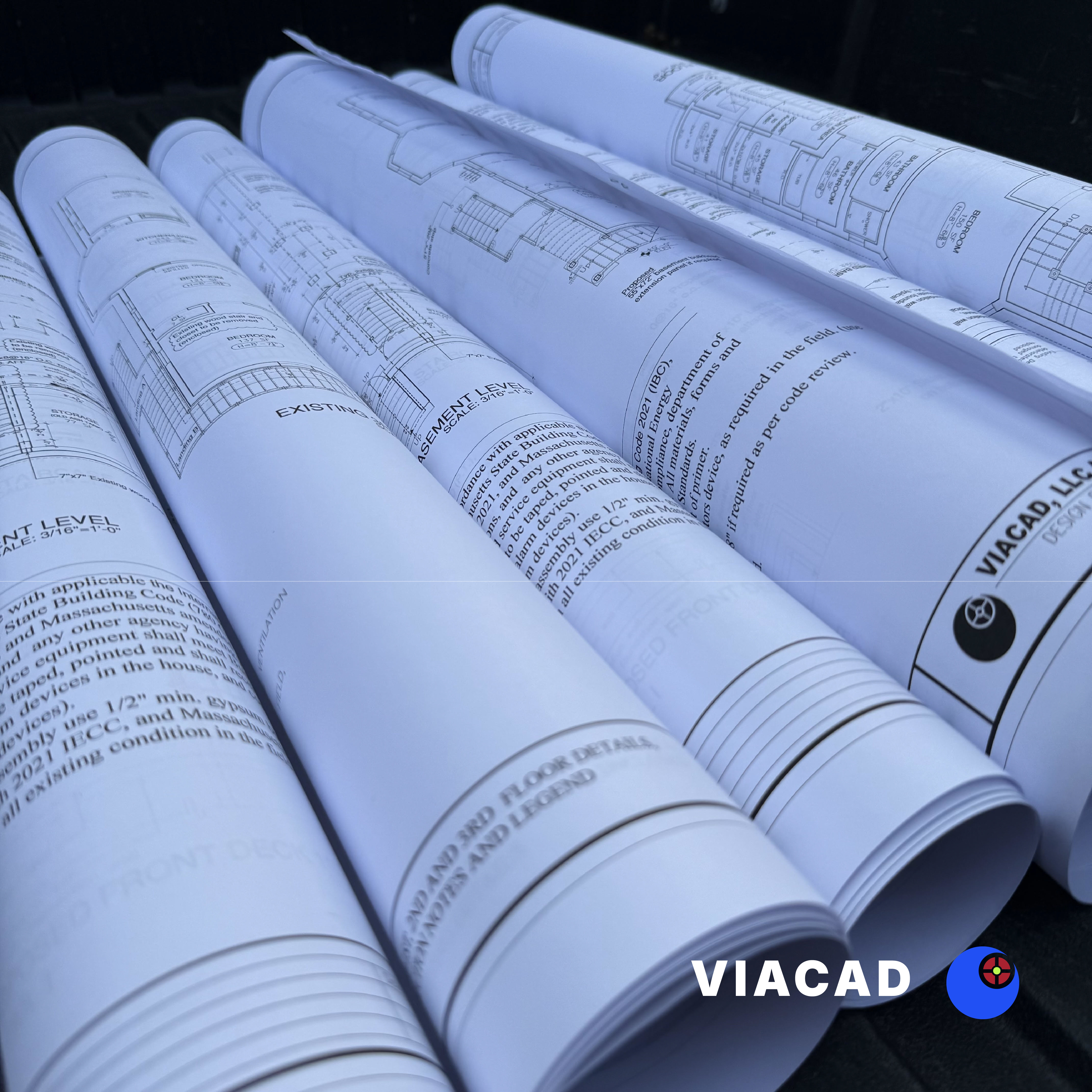

If you’re planning any type of construction on your property in Worcester, MA, understanding setbacks meaning is crucial for avoiding costly mistakes and legal complications. Whether you’re building a new home, adding a deck, or installing a shed, setback requirements set by Worcester’s zoning ordinance will significantly impact your project’s design and placement.
Setbacks represent one of the most fundamental aspects of land use regulations in Worcester, affecting everything from safety and environmental protection to neighborhood aesthetics. This comprehensive guide will help you navigate the complex world of property setbacks specific to Worcester, ensuring your construction projects proceed smoothly and legally. Setback regulations determine the specific place where buildings, fences, and other features can be located on a property to ensure compliance with Worcester’s zoning codes.
The setbacks meaning in property development in Worcester refers to the minimum required distance between a structure and property boundaries. These mandatory buffer zones ensure adequate space between buildings and property lines, creating essential separation for safety, environmental, and aesthetic purposes.
A setback essentially describes the zone of open space that must remain free of buildings or certain structures. When measuring setbacks in Worcester, the distance is calculated perpendicularly from a property line to the nearest point of a building’s exterior wall or eave. This measurement system ensures consistent application across different property types and shapes within the city.
The term “setback” in construction dates back historically but remains a key part of Worcester’s zoning ordinance, developed to promote public health through increased light and air circulation and enforce orderly civic layout concepts.
Different types of setbacks apply depending on the boundary location:
For the specific setback distances and requirements that apply to your Worcester property, refer to the city’s zoning ordinance or contact the Worcester zoning division. Setback requirements may also differ depending on the specific case, such as unique property situations or legal precedents that affect how regulations are applied.
Understanding the various types of setbacks helps property owners in Worcester navigate complex zoning requirements and plan construction projects effectively. Each type serves specific purposes and carries different measurement standards consistent with Worcester’s building and zoning regulations.
Property line setbacks represent the most basic type, defining the building-free zone from lot boundaries. These setbacks apply to front, rear, and side property lines, with specific distances varying based on Worcester’s zoning designation and local ordinances.
Most residential areas in Worcester require front setbacks ranging from 15 to 35 feet, while side setbacks typically range from 5 to 15 feet. Rear setbacks commonly fall between 20 and 40 feet, providing adequate space for emergency access and privacy protection.
Street and road setbacks specify minimum distances from the property line adjacent to public streets or roadways in Worcester. These requirements ensure visibility for drivers, provide safety buffers, and allow for future street expansion projects.
Corner lots in Worcester often face additional setback requirements along both street-facing sides to preserve visibility triangles for traffic safety. These enhanced requirements help prevent accidents by maintaining clear sightlines at intersections.
Environmental setbacks in Worcester protect sensitive natural features by establishing minimum distances from rivers, streams, floodplains, wetlands, or protected habitats. These regulations serve dual purposes: preventing pollution and mitigating natural hazards.
For example, Worcester’s conservation regulations may require buildings to be set back at least 50 feet from watercourses or wetlands to preserve water quality and habitat.
Utility setbacks impose minimum distances between structures and infrastructure such as wells, septic systems, overhead power lines, or underground pipes. These rules prevent accidental damage during construction, enable access for repairs, and protect water quality in Worcester.
Example utility setback requirements:
Special structure setbacks often apply to outbuildings like garages, sheds, accessory dwelling units, and swimming pools. These requirements may differ from rules governing primary dwellings, addressing the unique scale, use, or fire risk factors of accessory structures.
Many jurisdictions, including Worcester, allow small accessory structures under certain size thresholds (often 200 square feet) to have reduced setbacks, while larger structures must comply with full setback requirements.
.jpg)
The City of Worcester wields the authority to establish setback requirements through its zoning ordinances. These regulations are codified per zoning district, which can include designations such as residential (R-1, R-2), commercial, and industrial zones, each with specific standards for minimum distances from boundaries.
For detailed information, visual aids, and direct links to relevant ordinances, visit the official Worcester zoning page.
Before any construction can proceed, property owners in Worcester must obtain approval from the city’s zoning division to ensure their plans comply with setback requirements.
The zoning division of the City of Worcester handles setback administration and enforcement. Building permits generally cannot be issued for any new construction, addition, or remodel that would breach setback margins established in the zoning ordinance.
Compliance verification occurs through multiple stages:
Worcester’s Building & Zoning Division also offers pre-development consultation services to help property owners and developers interpret setback requirements before submitting full permit applications. This proactive approach can prevent costly design changes later in the process.
Worcester maintains detailed setback standards that vary by zoning designation. For instance, typical residential setback requirements might include:
Setback Type
Distance Requirement
Front yard
35 feet from street
Side yard
15 feet from property line
Rear yard
25 feet from back boundary
These standards may differ for irregular-shaped lots, corner properties, or lots abutting public alleys. The zoning department typically provides specific guidance for unusual situations that don’t fit standard setback formulas.
Concrete examples from Worcester illustrate common real-world setback values. Front yard setbacks typically range from 15 to 35 feet from street property lines, ensuring adequate space for landscaping, parking, and visual appeal.
Side yard setbacks commonly range from 5 to 15 feet from neighboring property boundaries, providing fire safety separation and privacy protection. Rear yard setback requirements usually span 20 to 40 feet from back property lines, allowing space for recreation, utilities, and emergency access.
Corner lots face special considerations, often requiring increased setbacks along both street-facing sides. These enhanced requirements maintain visibility triangles essential for traffic safety while preserving neighborhood character.
Very small accessory structures like fences under six feet in height or storage sheds under 200 square feet may be exempt from strict setback enforcement. However, larger structures such as detached garages or substantial sheds typically face full setback compliance requirements.
Setback requirements in Worcester serve multiple interconnected purposes that advance community safety, environmental protection, and quality of life. Understanding these benefits helps property owners appreciate why compliance matters beyond simple legal obligation.
Safety represents the primary driver behind most setback requirements in Worcester. Adequate spacing ensures emergency vehicles can access the rear of lots during fires or medical emergencies. Worcester’s fire department typically requires minimum clearances for ladder truck operation and firefighter safety.
Setbacks also reduce fire transfer risk between closely-packed buildings. The space between structures creates firebreaks that can slow or stop fire spread, potentially saving entire neighborhoods from catastrophic damage.
Utility infrastructure benefits from setback protection, preventing accidental damage during construction and ensuring access for maintenance crews. Power lines, gas pipes, and water mains require clear zones for safe operation and repair.
Environmental setbacks in Worcester protect water quality by filtering runoff before it reaches streams, rivers, or wetlands. Vegetation in setback areas acts as a natural filter, removing pollutants and excess nutrients that could harm aquatic ecosystems.
Wider setbacks from water bodies help preserve wildlife habitats and migration corridors. Many species depend on riparian areas for nesting, feeding, and shelter, making these buffer zones crucial for biodiversity conservation.
Setbacks also provide natural flood control by preserving floodplains and allowing rivers to expand during high water events. Buildings located too close to waterways face increased flood risk and can worsen flooding for downstream communities.
Uniform setbacks contribute to visually harmonious streetscapes and predictable neighborhood character in Worcester. Consistent building placement creates orderly appearance that many residents value and that can support property values.
Privacy protection represents another key benefit, as setbacks ensure adequate space between homes for personal enjoyment of outdoor areas. Without minimum separations, neighboring properties could overlook private spaces like patios, pools, or bedroom windows.
Setback zones in Worcester often serve as corridors for utility placement and maintenance. Water, sewer, gas, and electrical systems frequently run through these areas, making them accessible for installation, repair, and upgrades.
Sidewalks, bike paths, and other pedestrian infrastructure also depend on setback space. Worcester requires property owners to maintain sidewalks within front setbacks, supporting walkable communities and public transportation access.

Property owners frequently encounter setback compliance challenges in Worcester, whether through misunderstanding requirements or changing circumstances. Recognizing common violations helps prevent costly mistakes and legal complications.
Structures that commonly violate setbacks in Worcester include fences over the legal height limit (typically 6 to 7 feet), large sheds exceeding size exemptions (often 200 square feet), and unauthorized building additions that extend beyond approved setback lines.
Retaining walls represent another common violation area, particularly when property owners build them too close to property lines or exceed height restrictions without permits. These structures can affect drainage patterns and neighbor relations if not properly planned.
Decks, patios, and porches frequently violate setback requirements when homeowners extend them beyond original plans or add them without considering setback implications. Even seemingly minor additions like steps or railings can trigger violations if they encroach into required setback areas.
Building permits are typically required for any structure that impacts a required setback zone in Worcester. The permit process includes plan review to verify setback compliance before construction begins, preventing violations and ensuring safety.
Exempt structures usually include minor improvements below certain thresholds:
However, exemption rules vary significantly between jurisdictions, making it essential to verify Worcester’s specific requirements before proceeding with any construction project.
Property owners can petition Worcester’s Zoning Board of Appeals for relief when unusual lot shapes, pre-existing structures, or genuine hardship make strict setback enforcement unreasonable. The variance process typically requires demonstrating that compliance would create undue hardship without alternatives.
Grandfather provisions allow structures that were legal when built to remain even if zoning has since changed. However, expansions, major renovations, or reconstructions often trigger compliance with current setback requirements, potentially limiting future development options.
Successful variance applications usually require:
Although the variance process can be complex and time-consuming, property owners who meet all requirements may eventually obtain the necessary approvals to proceed with their projects.
Contemporary property development in Worcester faces evolving challenges that are reshaping traditional approaches to setback requirements. Urban planners and policymakers increasingly recognize the need to balance multiple competing interests in modern land use decisions.
Recent political debates, including setbacks faced by Democrats in advancing certain zoning reforms, have also influenced the evolution of setback policies in Worcester.
Smart growth initiatives in Worcester often advocate for reduced setbacks to support higher urban and suburban density, improved walkability, and more efficient public transportation systems. These policies recognize that traditional setback requirements can contribute to urban sprawl and car dependency.
Some Worcester neighborhoods have implemented pilot programs that explicitly reduce setbacks to accommodate smaller-lot housing, accessory dwelling units, and mixed-use development. These experiments aim to address housing affordability while maintaining community character and safety standards.
However, setback reductions must be carefully balanced against other community priorities. Privacy, emergency access, and environmental protection remain important considerations requiring thoughtful integration with density goals.
Green building standards and low impact development techniques in Worcester sometimes call for site layouts that deviate from traditional setback models. These approaches integrate construction more closely with natural site features to improve energy performance and reduce environmental impact.
Rain gardens, permeable pavement, and natural stormwater management systems may require flexible setback interpretation to function effectively. Worcester’s progressive municipalities are developing new frameworks that accommodate these innovations while maintaining essential protections.
Building orientation for solar access, natural ventilation, and energy efficiency can also conflict with rigid setback requirements. Forward-thinking communities in Worcester are exploring performance-based alternatives that achieve setback goals through different means.
Urban planners in Worcester increasingly debate the equity and efficiency implications of setback ordinances. Critics argue that large setbacks drive housing costs higher and perpetuate socioeconomic segregation by requiring larger, more expensive lots.
Conversely, advocates warn that insufficient setbacks can negatively impact public health, safety, and quality of life, particularly in communities with limited resources for enforcement and maintenance.
These debates are driving innovation in setback policy, with some Worcester jurisdictions implementing variable standards based on neighborhood context, income levels, or development type. The goal is achieving setback benefits while avoiding unintended consequences.

Understanding your specific property’s setback requirements in Worcester requires systematic research and potentially professional assistance. The process involves multiple steps and information sources that property owners should approach methodically.
When questions arise, don’t hesitate to contact the City of Worcester’s Building & Zoning Division for clarification and guidance. You can also send an email to the zoning division for assistance with specific setback questions or to request additional information.
Start by identifying your property’s zoning designation in Worcester, which determines applicable setback standards. The city provides zoning information through:
The zoning designation (such as R-1 or C-1) directly corresponds to specific setback requirements outlined in Worcester’s municipal codes. Make sure to verify the current designation, as zoning can change over time through legislative action.
Once you know your zoning designation, review the pertinent zoning ordinance or municipal building codes that spell out dimensional requirements. These documents typically include:
Worcester provides these codes online, though complex cases may require consultation with city staff for proper interpretation.
For complex situations involving unusual lot configurations, environmental features, or historic districts, consider requesting pre-development consultation from Worcester’s zoning division or community development department. These services can prevent costly mistakes and design revisions.
Professional surveyors provide formal identification and staking of property lines, as misidentified boundaries are a common source of setback violations and legal disputes. Survey accuracy is essential for proper setback measurement and compliance verification.
Worcester maintains dedicated staff to field setback-related inquiries and offer guidance for compliance. Taking advantage of these resources can save significant time and money during the planning process.
Keep detailed records of your setback research, including:
This documentation supports permit applications, protects against future disputes, and provides valuable reference information for future projects or property sales.
The verification process may take time, but thorough research prevents setback violations that could delay construction, require expensive modifications, or result in legal action. When questions arise, don’t hesitate to contact Worcester’s Building & Zoning Division for clarification and guidance.
Understanding setbacks meaning in Worcester, MA empowers property owners to navigate zoning requirements confidently and avoid costly compliance issues. These regulations serve essential purposes in protecting safety, environmental resources, and community character while supporting orderly development patterns.
From basic property line setbacks to complex environmental protections, these requirements affect virtually every construction project in Worcester. Whether you’re planning new construction, additions, or accessory structures, proper setback compliance ensures your project proceeds smoothly and legally.
As development trends evolve toward greater density and environmental sustainability, setback regulations in Worcester continue adapting to balance competing community interests. Staying informed about local requirements and engaging with Worcester’s municipal planning staff early in your project planning helps ensure successful outcomes.
Take time to research your property’s specific setback requirements before beginning any construction project in Worcester. Contact the City of Worcester’s Building & Zoning Division for guidance, and consider professional survey services to verify property boundaries accurately. This proactive approach will save time, money, and frustration while ensuring your project enhances rather than compromises your property’s value and Worcester’s community well-being.
Currently accepting projects in Massachusetts.